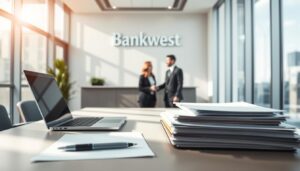In the ever-evolving landscape of modern finance, the term “leasing” has emerged as a pivotal concept for both businesses and consumers. Leasing offers the flexibility and opportunity to access assets without the burdens of ownership, making it an attractive option in today’s economy. Whether you’re considering a car, office equipment, or even property, understanding the nuances of leasing can unlock significant financial benefits.
Navigating the world of leasing requires a comprehensive understanding of its terms and conditions, as well as its potential impact on your finances. This financial strategy not only conserves capital but also provides the chance to utilize the latest technology and resources. As more people seek cost-effective and efficient ways to use capital, leasing continues to grow in popularity across various industries.
For individuals and companies alike, choosing leasing over direct purchase can be a strategic decision that enhances operational capabilities while maintaining cash flow. This article delves into the basics of leasing, its advantages, potential pitfalls, and how it compares to other financing methods. By understanding leasing, you’ll be better equipped to make informed decisions that align with your financial goals.
Understanding Leasing
Leasing is essentially an agreement where one party, the lessee, pays for the use of an asset owned by another party, the lessor, for a specified period. This arrangement allows the lessee to use the asset without the need for a significant upfront expenditure, which is a crucial advantage for many. From vehicles to high-end machinery, leasing spans a wide range of applications.
The leasing agreement typically outlines the duration, payment terms, and conditions under which the asset can be used. Both parties must clearly understand these details to avoid future misunderstandings. Often, leasing agreements include maintenance and service clauses, which can further simplify asset management for the lessee.
One of the key distinctions within leasing is the difference between an operating lease and a finance lease. An operating lease is often short-term and doesn’t transfer ownership risks, whereas a finance lease is closer to a purchase, with longer terms and potential ownership at the end.
Advantages of Leasing
One of the primary advantages of leasing is preserving capital. By avoiding large initial payments, businesses and individuals can allocate resources to other crucial areas. This benefit is particularly significant for startups and small businesses that must carefully manage cash flow.
Leasing also enables access to the latest technology and equipment. In industries where technology rapidly evolves, leasing allows companies to remain competitive by upgrading to newer models without the financial strain of purchasing new assets outright. This flexibility can lead to increased productivity and efficiency.
Moreover, leasing can offer tax benefits, as lease payments are often tax-deductible as a business expense. This advantage makes leasing an attractive option for companies seeking ways to reduce their taxable income. However, it’s essential to consult with a tax advisor to understand the specific implications for each situation.
Potential Pitfalls of Leasing
Despite the advantages, leasing is not without its potential downsides. One of the main disadvantages is the total cost over the lease term, which can sometimes exceed the purchase price of the asset. It’s crucial to conduct a thorough cost analysis before committing to a lease agreement.
Another issue to consider is the restrictions placed within leasing agreements. These may include mileage limits in vehicle leases or usage restrictions on equipment, leading to unexpected costs if limits are exceeded. Understanding these terms is essential to ensure that the lease remains a cost-effective solution.
Additionally, lessees may face challenges with the end-of-lease process, particularly with the return conditions of the asset. Fees for wear and tear or exceeding usage limits can add substantial to the overall cost if not carefully managed during the lease term.
Leasing vs. Buying
When considering whether to lease or buy, several factors must be assessed, including the asset’s lifespan, depreciation, and the organization’s cash flow needs. Leasing offers flexibility and lower initial costs, but buying an asset may be more cost-effective in the long run for items with a long useful life.
Owning an asset means you are free from usage restrictions and can benefit from its full depreciation value over time. However, it requires a considerable initial investment, which might not be feasible for all. Cash-rich businesses might prefer purchasing to avoid the ongoing financial commitments of leasing.
Conversely, leasing can be advantageous for assets subject to rapid technological changes. By opting to lease, organizations can effortlessly transition to newer models while maintaining access to state-of-the-art resources, an essential consideration in tech-driven industries.
Asset Management and Leasing
Leasing is an effective tool for managing assets, particularly in industries where technology and equipment rapidly evolve. By leasing assets, companies can maintain up-to-date resources without the need for frequent capital expenditures. This helps organizations remain competitive and responsive to market changes.
Effective asset management through leasing also enables organizations to predict and manage costs more efficiently. Fixed lease payments provide stability in financial planning, reducing the uncertainties often associated with ownership-related expenses such as maintenance, depreciation, and unexpected repairs.
Furthermore, leasing agreements often include services such as maintenance and upgrades, relieving lessees of the burdens of asset management. This allows companies to focus on their core operations instead of dealing with asset upkeep, thereby streamlining business processes and enhancing overall operational efficiency.
Conclusion
In conclusion, leasing is a versatile financial tool that offers numerous benefits, including capital preservation, access to the latest technology, and potential tax advantages. However, understanding the potential pitfalls, such as the total cost of leasing and agreement restrictions, is crucial for making informed decisions.
When deciding between leasing and buying, individuals and businesses should carefully consider their financial situation, asset lifecycle, and need for flexibility. Leasing offers an opportunity to manage cash flow effectively, but it may not always be the best choice depending on the circumstances.
Ultimately, with thorough analysis and strategic planning, leasing can play a vital role in enhancing operational capabilities and supporting long-term financial objectives. By staying informed and assessing all available options, organizations and individuals can capitalize on the opportunities leasing presents.





